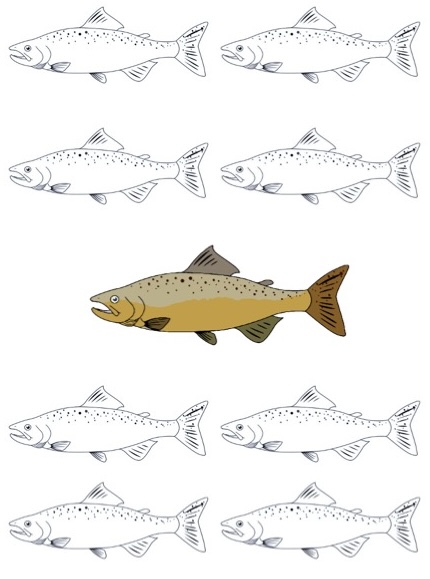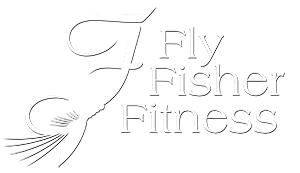Don’t Follow the Crowd

Click play to listen to Don’t Follow the Crowd.
Don’t follow the crowd is easy to say, harder to do. It’s engrained. We look for the number of cars in the parking lot of a restaurant as validity to quality. Best-seller lists point us toward purchases. In some cases, we act as individuals, but most of the time, we exhibit ‘herd behavior.’
Safety in numbers is not always the safest choice. Decline, deterioration and decay are all avoidable parts of aging. Statisticians rely on most people’s tendency to not change. It is presumed by medical professionals and researchers who predict future trends that the current situation influencing more disease will remain the same.
In other words, these ‘professionals’ are counting on the majority of people to remain their same, uneducated, undisciplined selves; eating the same standard American diet, leading an ultra-comfort, sedentary lifestyle, and ignoring the snowball effect of the hallmarks of aging.
Don’t Follow the Crowd
More Older People Following the Crowd = More Chronic Disease
Here are some of the predictions that count on the public’s continued uneducated ineptness, inertia and distracted contentment.
The CDC reports that 50% of adults are living with at least one chronic disease. The population of older adults is on the rise and so chronic diseases are predicted to increase even more.
- People in the United States aged 50 years and older will increase by 61.11% from 137.25 million in 2020 to 221.13 million in 2050.
- Those 50 years and older, with at least one chronic disease, are predicted to increase by 99.5% from 71.522 million in 2020 to 142.66 million by 2050.
Have you heard a doctor spout off statistics such as older people’s likelihood of developing high blood pressure, diabetes or arthritis?
These ‘predictions’ are based on trend data. You do not have to be part of the trend. Don’t follow the crowd. With minimal effort, you can be an outlier. I did it. You can too!
Don’t Follow the Crowd
“Any human being who does not wish to be part of the masses need only stop making things easy for himself.” Friedrich Nietzsche (1844–1900)
Begin now to shift the trend away from declining health to improving health as you age.
In the Book Lifespan: Why We Age and Why We Don’t Have to, David Sinclair, PhD, aging researcher and professor of genetics at Harvard University writes, “If hepatitis, kidney disease or melanoma did the sorts of things to us that aging does, we would put those diseases on a list of the deadliest illness in the world. Instead, scientists call what happens to us a ‘loss of resilience,’ and we generally have accepted it as part of the human condition.”
We are uncomfortable talking about what we cannot fully understand. Sinclair is pointing to our embarrassingly embryonic view of aging. He is saying we can and should do better than accepting, even conceding to aging’s insidious power over us.
Begin by developing a single-pointed effort to understand what aging is and what it does.
Update your lifestyle. As we age, biological processes that keep us strong, vital and disease free become blunted, dull, less robust.
Adapt your lifestyle to your biology
- Exercise
The mild stress of exercise reawakens our biological processes and invigorates our physiology. Aerobic exercise conditions your type-1 muscles with the goal of developing endurance. Aerobic endurance is how long you can perform moderate exercise. Don’t follow the crowd, especially here!
Endurance is important for daily life, climbing stairs, standing and cooking over a grill outdoors or in the kitchen; and your energy level. When you exercise in a specific way, you trigger precise growth pathways. Moderate, long and slow aerobic exercise is what sports physiologists call zone-2. You cruise—run, walk, hike, bike, swim, row or ruck—at a steady targeted heart rate of 60-65% of your maximum for thirty, forty, up to sixty minutes. This is the zone where you optimally burn fat, raise critical hormone levels and grow new mitochondria; those cellular power plants, ‘energy organelles’ in muscle that increase metabolism and energy. The potency of zone-2 exercise can’t be overstated.
Besides increasing the quality and quantity of mitochondria, you initiate healing. The entire body (brain included) grows, repairs and heals. You gain the most endurance and overall health improvement from this slow, steady aerobic exercise. Speed is not important. Time and mileage are the crux of success. Slow, consistent exercise—over an extended period—weeks, months and years. This drives the deep, growth pathways of improved mitochondria health, improved immune function and infrastructure growth of blood delivering capillaries and vessels. Sustained exercise equals sustained, long-term growth.
With extended, consistent effort, you transform your physiological self into the form of an athlete. Every athlete, marathoner, Tour de France and Olympic hopeful incorporates zone-2 training to build a solid base of aerobic endurance. They are going for gold-level performance. You are working toward what I call ‘wealth and fitness,’ becoming functionally younger. You’re in good company. You can do aerobics every day because your body heals overnight.
Aerobic capacity or VO₂max, is your maximum (max) rate (V) of oxygen (02) uptake and use during exercise. You may think that VO₂max is for athletes, but it’s also valuable at our more ‘functional athletic’ level. Lecturers, clinicians and researchers writing in The Conversation wrote, “people who manage to improve their VO₂max over time will lower their risk of disease and live longer.” Exercises that improve your VO₂max involve intensity, exercising near the limits of your maximum heart rate. Things like sprinting on the road, an exercise bike, stepper or rucking at 85-90% of your maximum heart-rate. Your maximum heart-rate is 220 minus your age.
Caution
Doing intense exercises requires a solid base-level of aerobic fitness. At minimum, ask your doctor for a treadmill fitness assessment. Feeling the comfort that you can exercise intensely without problems is priceless!!!
Add in resistance training exercises twice per week (your body needs 48 hours recovery time) because you need to maintain and build (different) type-2 muscle to address what is involuntarily lost through aging.
- Update Your Nutrition
Eat a little less, cut calories or fast. Do what works for your situation. You don’t have to make a big, starving production of it by not eating for a whole day. Wait an extra hour to break the overnight fast. Don’t eat breakfast as soon as you wake up. It’s easy to extend the morning fast, 12-16 hours is optimal. Craft your day to reduce caloric intake, even slightly is enough. Fasting is considered the ‘Holy Grail’ of longevity.
The small lifestyle updates of exercise and fasting triggers an ancient survival or longevity pathway through a natural biological process called hormesis.
It’s the idea that what doesn’t kill you makes you stronger. Small stresses to our body; hunger, and the engagement of muscle reawaken those declining processes and systems and trigger them to function like they are young again.
Hormesis informs us (or reminds us) that our genes didn’t evolve for a life of pampered comfort.
Consider, we are more adapted biologically for starvation. We have survival circuits for scarcity more so than abundance because primordial life was not cushy and easy.
Eat whole foods, prebiotics (fiber in certain foods that feed beneficial bacteria in your gut), probiotics (in yogurt), and lots of plant-based, whole foods. Stay away from the standard American diet (SAD). Be wary of foods made to taste good but are high-calorie, low on nutritional value and processed to the point, they are pre-digested.
Avoid added sugar or ‘free sugar,’ as it is sometimes called. Increase the amount of natural sugar and diversity of foods you eat. For example, snack on fruit and a mix of nuts and seeds. This helps contribute to the process of repopulating your gut with anti-inflammation microbes. You promote overall health and new species of immune system-improving microbes.
Start your day with a protein smoothie, the make your own, DIY kind where you add protein powder. Note: isolate grass-fed whey protein powder has zero carbs and zero lactose. Add diverse plant-based foods the crowd doesn’t normally eat. You will be surprised how taste gets lost in the drink. Prebiotics are readily available in the parts of raw vegetables we usually toss in the compost pile. The stems of beets, the stump of lettuce, kale ribs, the hard stalks of broccoli, and the end of carrots are all good prebiotics. Kale ribs spun into a smoothie have no taste and are hard to recognize except for the pulp. Also, use unsweetened yogurt. Don’t worry, the fruit will sweeten it just perfectly and this is what we want!!!
Seventy Percent of Immune Function is in the Gut
Way back when, Hippocrates (460–370 BC), the father of medicine, said, “All disease begins in the gut.” Now, finally, we are catching on. Trillions of microbes, 10 times more than your human cells, about 100 trillion microbes, call your body home and a good, diverse microbiome population in your gut promotes optimal health and longevity.
Microbiology researchers report: “The mechanism leading to disease development has a crucial correlation with gut microbiota, metabolic products, and host immune response in humans.”
By not following the crowd, you remove yourself from trend statistics. No one can say what is possible—how you will age and keep your strength, health, vitality and longevity. This is outlier territory. There is no trend data for this lifestyle!
In the same way your DNA is specific, individual, one-of-a-kind, never to be duplicated, you have created a lifestyle category all your own.
It is a great life. Our pampered, marshmallow soft modernity is wonderful, but it doesn’t serve us well for staying strong, vital, and resilient into our later decades. We must push ourselves.
We can do it, we should do it, we must do it!!!
Are you interested in joining a community of like-minded fly fishers and outdoor types who want to engage and discuss The Art of Aging?
Learn more…..Join us on Substack!
Note: The information herein is meant to be general guidance on fitness. It is not a substitute for consultations with healthcare professionals. In fact, professional consultations are required for success with exercise. Always have a physician approve your planned activity before making changes.
Categorized in: General Knowledge
